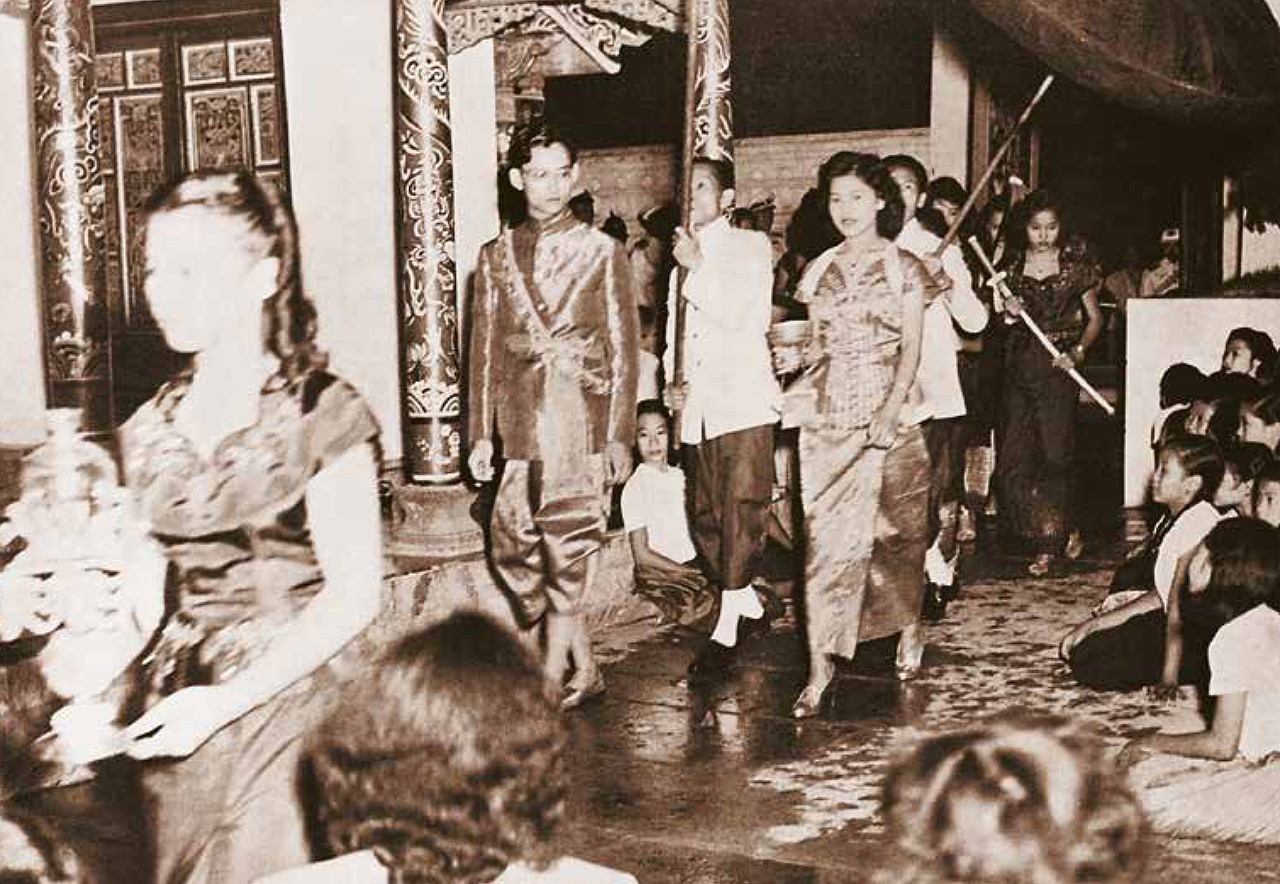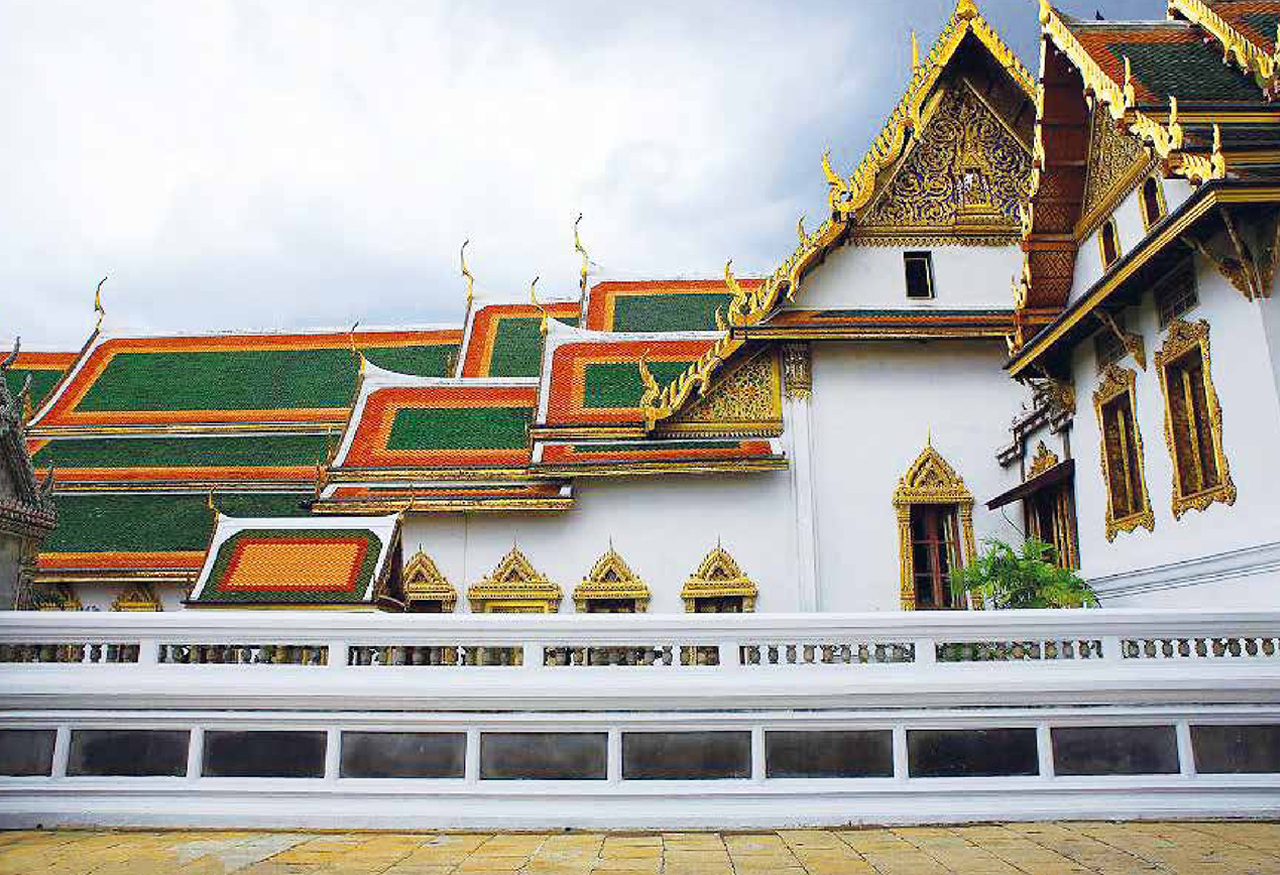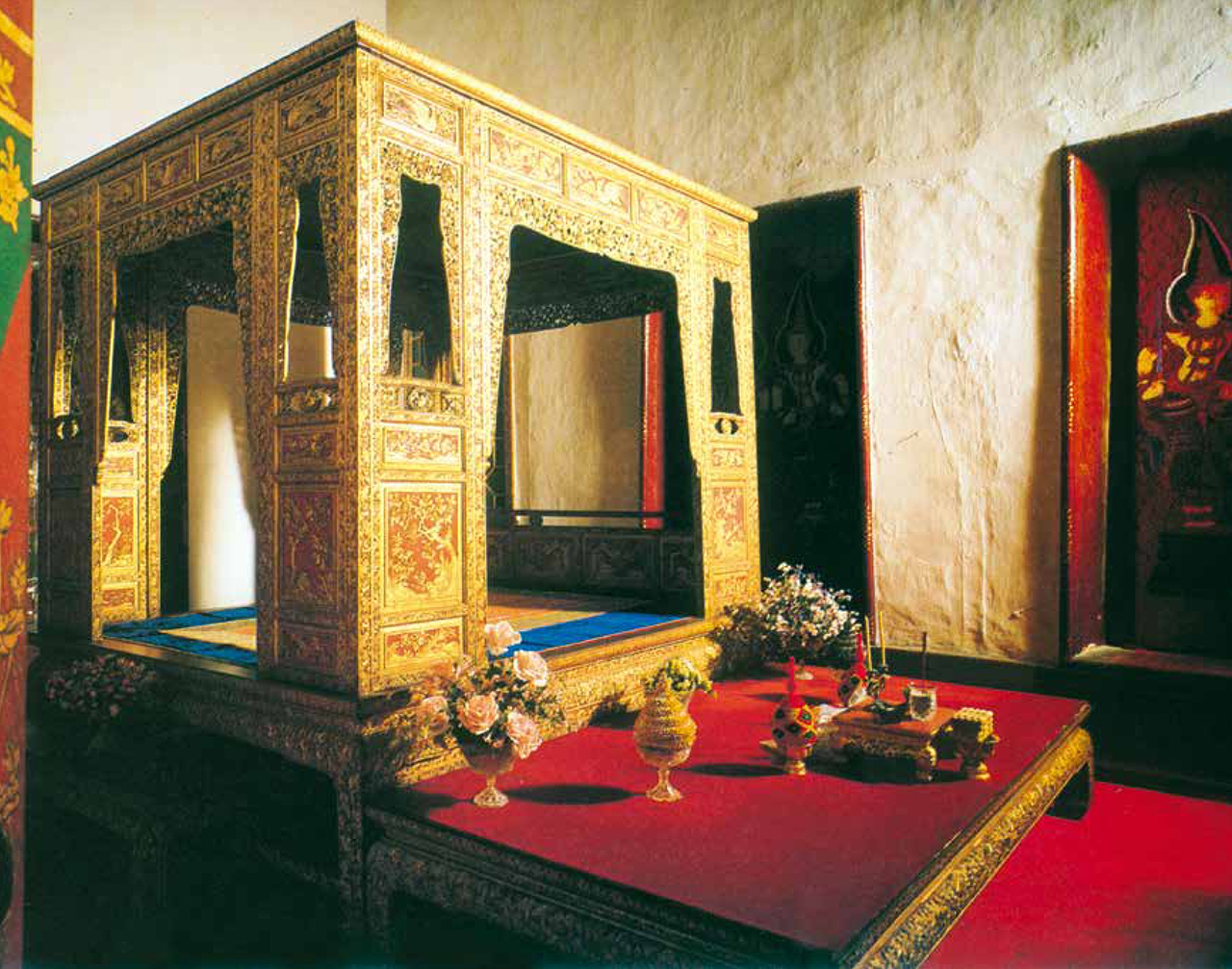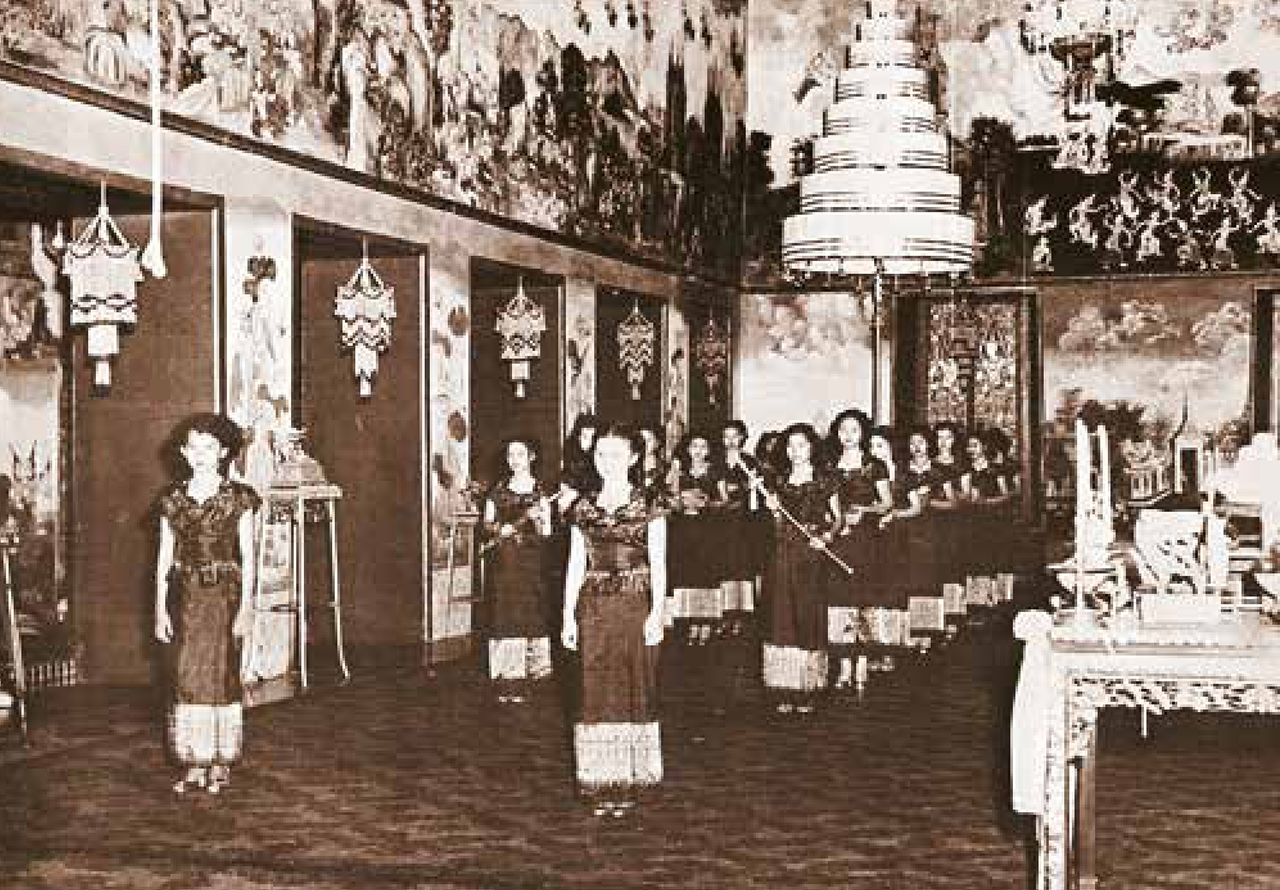Assumption of The Residence
The ceremony of the Assumption of the Residence is in simple terms a private housewarming ceremony for the royal family. It essentially celebrates the King’s taking up the ceremonial residence at the Grand Palace.
The ceremony of the Assumption of the Residence is in simple terms a private housewarming ceremony for the royal family. It essentially celebrates the King’s taking up the ceremonial residence at the Grand Palace.

The ceremony is held at the Chakrapat Biman Royal Residence, as it has been since the reign of King Rama II. Centuries ago, the apartments served as the permanent residence of King Rama I, King Rama II and King Rama III. Since the reign of King Rama IV, the traditional Thai-styled, one-story building has served only as a ceremonial residence.

The ceremony varies in details from the First Reign to the Ninth Reign, yet is mainly comprised of these elements.
After the King has been crowned, he proceeds to the Maha Monthira Palace Group where the Chakrapat Biman Royal Residence stands as the main structure.

The King is escorted into the state bedchamber inside the Royal Residence by a procession of ladies from the royal family bearing the Royal Auspicious Items and Royal Utensils.

In the old days, only ladies who belonged to the royal family could take part in the Assumption of the Residence. Later in the Rattanakosin era, however, members of the royal family who held the rank of Mom Chao could participate in the ceremony, according to the official publications on the Royal Coronation Ceremony by the Department of Fine Arts.


The Royal Auspicious Items comprise a cat, a grinding stone, a tray of green gourd, a tray of rice seeds, a tray of beans and a tray of sesame seeds.
During later reigns, more items were added, including a white rooster (for the coronation of King Rama VII), the royal flywhisk made of tail hair of a white male elephant, and several types of weapons.
Once the King proceeds to sit on the bed, senior members of the court would present to him a bunch of areca flowers made of gold. Another lady would then hand him a golden key, signifying his ownership of the palace.
After that, the King lies down on the bed. Senior ladies of the royal family would give him their blessings, followed by the rest of the court. The ceremony ends with a fanfare of traditional music.
(Sources & photos: The Royal Coronation Ceremony, Ministry of Culture)
